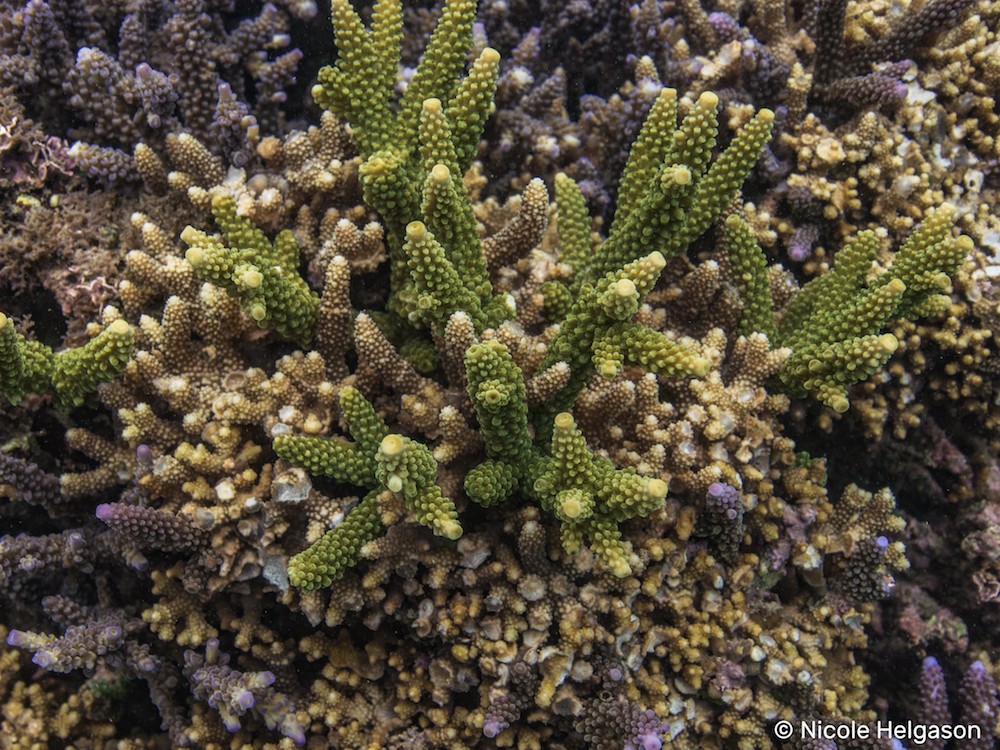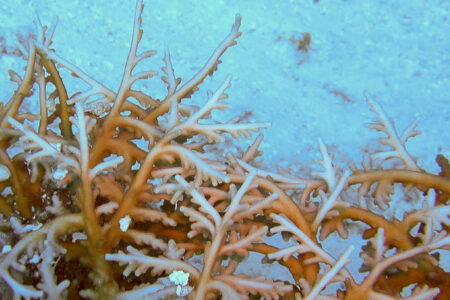Mimic Algae
Organisms living in the underwater world are masters of camouflage and disguise, all to avoid predation from larger or more aggressive species. Cuttlefish change colors to blend in with their surroundings, trumpetfish drift motionlessly between gorgonian corals and seagrass confusing any would-be predators, but no disguise is more bizarre than algae which mimic the shape of branching Acropora corals.
Mimic algae (Eucheuma arnoldii), was first described from the Philippines in the early 70’s, and more recently from North-West Australia. Eucheuma arnoldii is a species of fleshy, noncalcified, red algae that mimics the form of Acropora branches with bumps resembling corallites and a tapering branch appearing to have an axial corallite
There are at least six distinct species of Eucheuma algae and perhaps 10 or more forms, but Eucheuma arnoldii, is the only one to mimic Acropora corals. Three of the Eucheuma species are edible and harvested primarily in the Philippines and Indonesia, and sold to for carrageenin which is widely used in the food industry, for gelling, thickening, and stabilizing properties.
Because Eucheuma is an edible algae, the mimic algae is also very appetizing to fish, which is perhaps a reason it has adapted to life masquerading as coral. Because of this unique growth form, and declining herbivorous fish population, mimic algae can become a nuisance to corals, quickly out competing the slower growing Acropora and suffocating coral colonies.
The number of herbivorous fish of a reef is one of the key indicators of reef health. These fish help control the population of algae, leaving more space for corals. Surgeonfish and parrotfish are two key grazers, which are also fished for food consumption. The loss of these fish is also leading to the decline of coral reef.
While it might not be obvious, herbivory from sea urchins and large plant-eating fish is one of the most important processes in maintaining an ecological balance. Their grazers help keep algae in check giving time and space for corals to grow.
Next time you’re diving in the Indo-Pacific keep an eye out for mimic algae! And if you’re trying to restore a reef, don’t be fooled by this master of disguise, or it will surely out-compete your corals.



